Anatomy Of A Track: 'Lockring'
This is a guest post by Berlin-based producer Stephen Howe. In it, he breaks down the process of making the track ‘Lockring’, which features on the compilation/mix CD In The Pocket: The Sound Of Welt Discos. Take it away Stephen!
Hi, me again. I’m back with another how-the-sausage-is-made production exposé. This time, the sausage in question is my track ‘Lockring’ from In The Pocket: The Sound Of Welt Discos.
It’s been two years since my debut EP came out on Welt Discos. It’s been an eventful period: I released my second EP, an electro project, on FXWL, moved into a new studio, attended many fantastic parties, had some nice gigs myself, and made lots of new music, some of which I’m looking forward to sharing soon.
Joe first mentioned his idea of doing a mix CD earlier in 2024. I must admit that I never really got into physical mix CDs, I preferred to download mixes or radio shows and listen to them on my iPod nano. Of these, I distinctly remember the Wideboys’ Ministry of Sound - Addicted To Bass 2009 getting heavy rotation on the school bus, and Ben UFO’s FabricLive.67 being very influential a few years later at university. Nevertheless, I thought Joe’s idea was cool and ambitious, especially given he wanted to make it with entirely new, unreleased music.
So when I got the official “Request for music” email in January, I was thrilled to be asked to contribute to Welt Discos again. I sent over a batch of tracks I had been working on over the past few months, including an early version of Lockring with the note:
8. Lockring - some synthy, moody 2-step - WIP - could do with some more work.
Joe said he liked three of the tracks I sent and would get back to me with his choice when he’d got a better idea of the contributions from the other artists. A while later, Joe had settled on ‘Lockring’, partly because it mixed nicely with Louis R’s ‘Brokendrum’. I was happy with that, because I had only started ‘Lockring’ a few months before this, so it felt nice to get quite a fresh track out into the world.
The mood
Back in autumn 2024 I was feeling creatively drained. After a long cycle of feedback and revisions for my FXWL EP, my ears and musical brain were fatigued; I’d listened to the tracks hundreds of times. Summer was over, the evenings were drawing in, and Berlin was being drenched in cold rain. Inspiration for new material was in short supply.
But all was not lost. The constant rain meant that I wasn’t cycling to the studio as usual, I was taking the S Bahn instead. This gave me ample opportunity to listen to music again, and I found solace in putting Metamatics’s Neo Ouija album on repeat, his bluesy 2-step matching the moody weather. Eventually, I started analysing the sounds and building ideas of how I could incorporate some of those motifs into my own music.
The Sequential Pro 3
Most of the electro basslines on the FXWL EP had been made with my modular synth. I was proud of those sounds and I did really enjoy patching the modular, with its ultimate patch flexibility, multiple interfaces for expression and snappy envelopes. Having said that, I found the inability to save my favourite patches to be quite limiting. Some producers like this ephemeral, destroy-the-mandala style of sound design, and while I do admire that, I find the requirement to create interesting sounds and interesting sequences in one session to be unnecessarily challenging. I’m not sure which is worse: thinking of how many cool sounds have been wasted on rubbish sequences, or vice versa.
I needed presets. My initial remedy to this was to start writing diagrams of my favourite modular patches using the notation detailed in Patch & Tweak. They look like this:

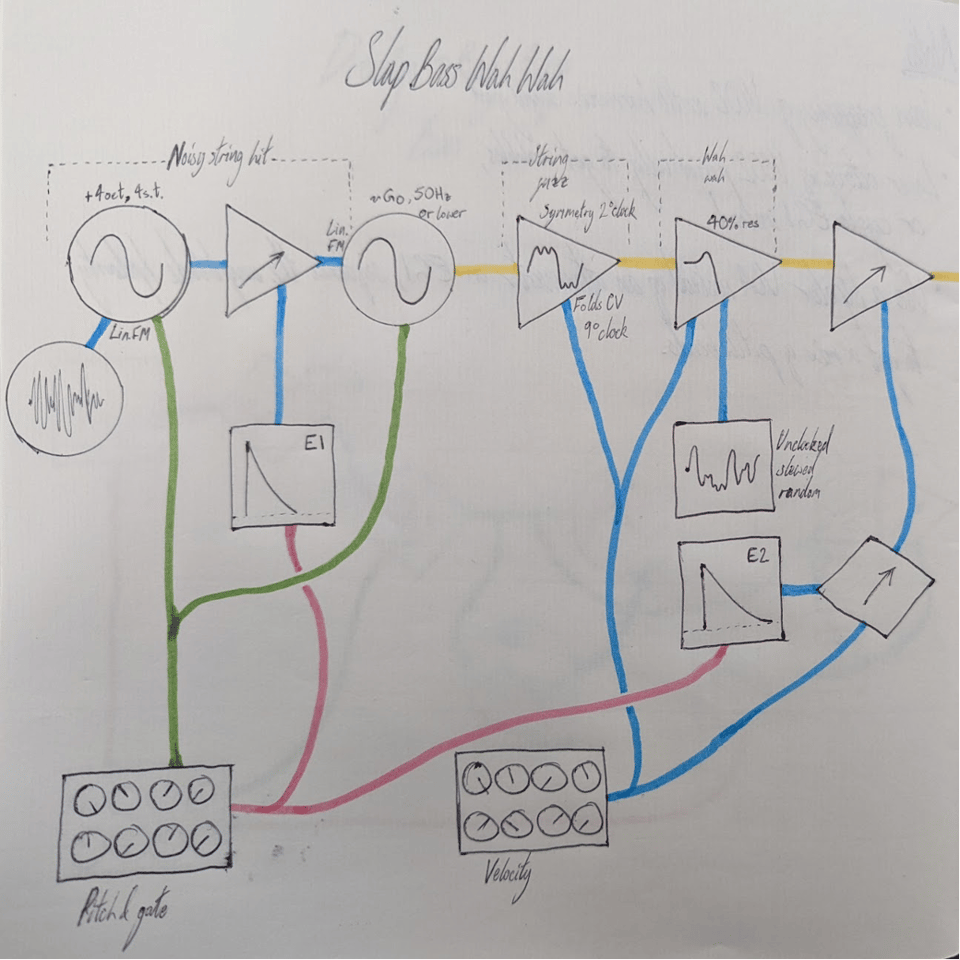
Even with these diagrams, recreating the more complex patches took a lot of time, which broke my creative flow during a writing session. I wanted to be able to flip through my favourite sounds, so I began looking for a go-to analogue monosynth with the following criteria:
knobby interface, minimal menu-diving
multiple oscillators
nice filter (being able to do driven, Minimoog-style bass patches would be ideal)
deep modulation matrix to get close to modular flexibility
extensive midi CC implementation for sequencing parameters
multiple expression interfaces (more than just a single modwheel, which is standard on most synths)
After watching every single YouTube video about it (something I always do before buying a new piece of gear), I concluded that the Sequential Pro 3 seemed to tick all these boxes. The digital third oscillator was a nice bonus, as were the multiple filter modes and onboard effects. The built-in sequencer was surprisingly powerful too. Even though I’ll always favour the Cirklon for writing, it was great to be able to save a short sequence per patch, to serve as a little reminder of how I might use it.

I set up my keyword searches on Kleinanzeigen and a few weeks later I copped a second-hand Pro 3 for a good price. I subsequently spent three days shut away writing and organizing patches for it.
The lead
One of the patches I had copied from my modular diagrams to the Pro 3 was called “Perc Pops”. It uses a sine-wave oscillator playing the fundamental and then a noise oscillator mixed in on top. The filter is tuned to a perfect fifth above the fundamental, with full pitch tracking and fairly high resonance, which brings its tone close to another sine wave. It’s not quite a sine though, there’s still a bit of noise in there, which gives the patch a smeared, melancholic quality.

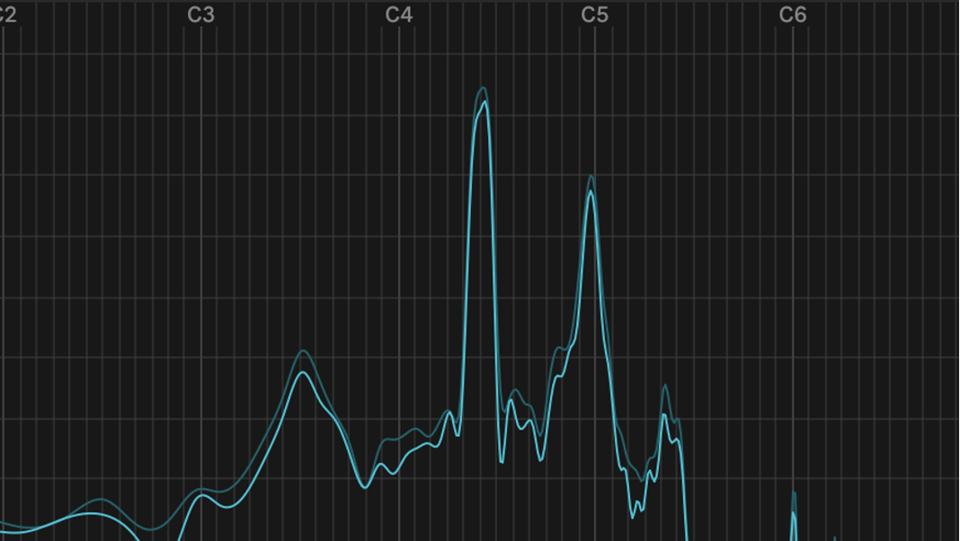
After another rainy studio commute listening to Neo Ouija, I had no real intention of writing any new music, I just wanted to have a play around with my new patches on the Pro 3. I decided to try writing a bluesy sequence on the Cirklon for the “Perc Pops” sound. I started, as I often do with melodies, by randomly generating a bar of notes in the blues scale, using the Cirklon’s random sculpt feature. After some further, manual sculpting, I got to something I thought was a nice starting point. I dialled up the swing to get more “Metamatics-y” and wrote a second bar for the sequence; some small variation.
Then came some deeper Cirkloning. I wanted the sequence to sound more like someone playing blues guitar, which meant it needed slides. I didn’t want the slides to happen on the same notes every time though. After all, a good blues guitarist wouldn’t do that. So I found a nice portamento time, then used one of the Cirklon’s aux rows to randomise the Pro 3’s portamento mode via midi CC. I kept it off for most of the notes, but left open the possibility of a slide sneaking in where it sounded good.
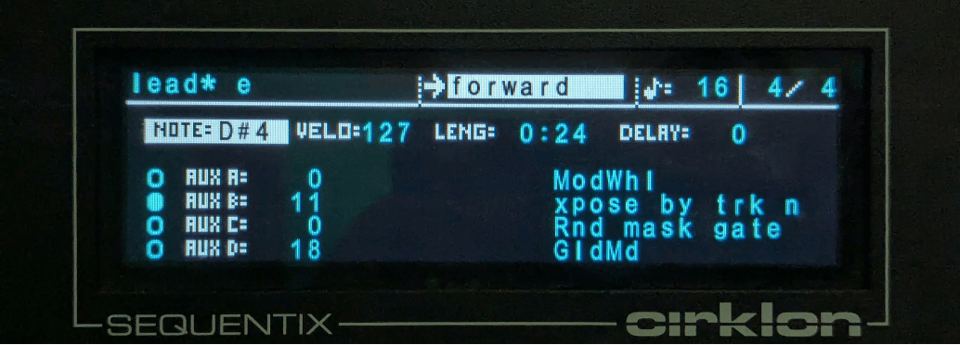
For the fourth bar of the sequence, I employed a tried and tested Cirklon aux recipe to randomly shift notes up and down by an octave. Combined with the randomised portamento, this occasionally produced wild slides going up or down to the next octave. Nice.
At this point, I decided that the sound and sequence were good enough to hit record, but I knew that if this recording was to become a full track, then I would need some expression in the patch to build tension. I assigned the Pro 3’s mod wheel to the level of the noise oscillator, which meant I could fade up from a sine tone to the full patch in the intro. Then I mapped the touch strip to the filter cutoff frequency, which allowed me to disrupt the perfect fifth interval and pick out higher (in)harmonics in the noise, turning this melancholy pluck into a wonky percussion instrument.
The drums
I turned to my Elektron Analog Rytm to lay down the drums. I wanted to write 2-step-style drums without drawing from the classic UKG sample palette. The wispy hi-hats are probably the most interesting thing here, done with a random LFO to the hat filter envelope. Using 808 rims helped to steer things away from classic 2-step territory, and, for a touch of flare, I went for the 808 cowbell too. This iconic sound is in fact just another two-oscillator synth playing a fifth interval. Fifths are becoming a bit of a theme here.
Once I’d matched the swing of the lead, I bashed in eight bars of drums on the sequencer. A couple of flams, some light probability on the hats and it was good enough for now. Onwards.
The basses
There are three bass patches in the track. The first is the “boom”, a long, ominous bass note from Ableton that plays on the one. It’s a sample of a decay-modded 606 kick drum from some long-forgotten sample pack, going through the wavefolder in Ableton’s saturator, which gives it an interesting, hollow distortion character.
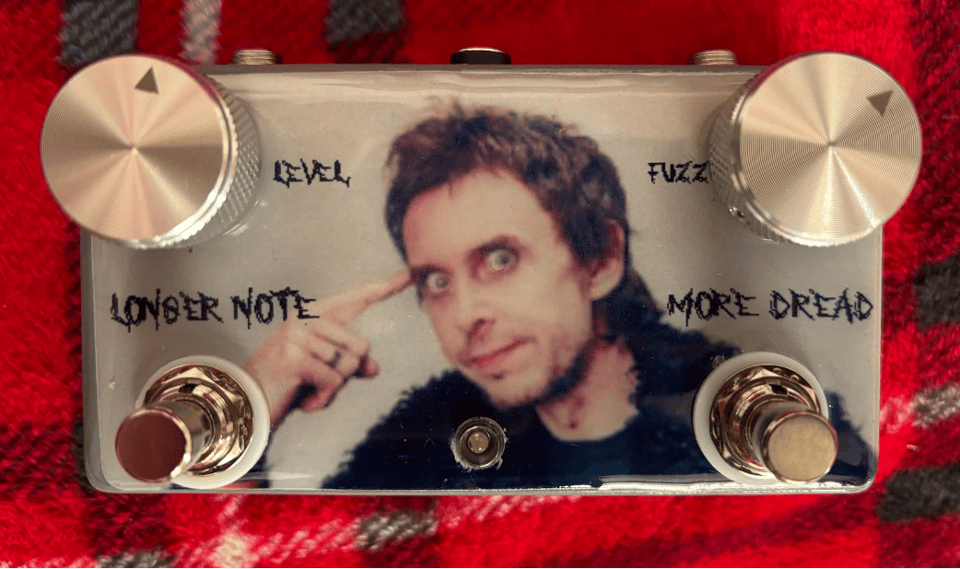
The second is a squarey sub, from the Korg Monologue, playing two notes, and the third is a two-operator FM bass called “Jazzmaster” that I made on the Yamaha TX81Z. It’s supposed to sound like a smooth bass guitar. By the end of the first session, this sound was just playing a very simple fill sequence, finishing off every four bars, but this repetition irked me, so in a second session, I decided to roll up my sleeves and manually play the TX81Z into Ableton. It had to be manual, because I wanted to capture some pitch-bend flourishes for the fills that would be difficult to dial in with a step sequencer. After more attempts than I’d like to admit (Matt Johnson Jamiroquai I am not) I had recorded some satisfactory snippets that I could drag around in the arrangement later.
The accompaniment
At this point, I was very happy with the lead, the basses and the drums, but I’d built up enough production experience by now to know that those elements alone wouldn’t carry the track to full length.
Sticking with the fifths theme, I chose a patch on my Nord Rack 2X that paired the oscillators a fifth apart, through a bandpass filter, again with some random portamento. I ran this through another oscillating bandpass filter in Ableton to give it some slow movement across the stereo field.
For the B-section, I turned to my Novation Peak. I felt that the overwhelming majority of the sounds in the track sounded analogue, so I wanted to bring in something unmistakably digital. I selected an FM patch that I had originally designed in an attempt to emulate the bass from Uberzone ‘Moondust’. I never quite nailed it, but the patch sounded cool anyway, so in it went.
All the track was missing now was those crucial pew-pew FX sounds. I hadn’t touched the modular at all yet, and the empty tracks were staring at me, so I quickly patched up some analogue laser pews using my SY0.5. I ran these, along with a few similar samples from Ableton, through the patch bay and into my Sound Master SE-4200, a BBD delay unit from the late 70s. If you ask me, these old rack effect units are fantastic value. I love the dubby degradation of BBD delays, and many include a built-in spring reverb too. If that sounds appealing, I recommend searching your local marketplace for Yamaha, Ibanez, Sound Master, Electra or J&J delays and reverbs.
The sample
I love a vox pop. Although I don’t use vocals in all my tracks, I do feel that just a sprinkling of humankind’s oldest and most expressive instrument can lift a track to new levels and catch the ear of the listener. After all, the human brain has entire areas dedicated to recognising voices over other sounds.
When I do include vocals, I rarely go for a fully-fledged song-style vocal, preferring to process and mangle something short. Scrolling through my sample library, this time I landed on the intro from The Daddy Hip Hop Mix of Mary J. Blige’s ‘Sweet Thing‘ (itself a cover of Rufus and Chaka Khan’s 1975 smooth soul jam). This sample has been used to great effect by several producers, two of my favourites being DJ Gunshot’s ‘Wheel Up‘ and Corporation & Scattie’s ‘Heat & Fire’.
I pitched it up and used Ableton’s sampler to play the first “heat” syllable freestyle-style, lilting it with a negative pitch envelope. Before the drop, I let the full “heat fire” hook ring out, using Ableton’s audio warping to mess up the cadence of “fire”. As far as the writing stage goes, the track was pretty much there.
The mixdown
For me, the first step of every mixdown is actually arrangement. It involves combing through the track and making space for each element. This becomes especially important in sparser tracks and makes the subsequent mixdown a lot more straightforward.
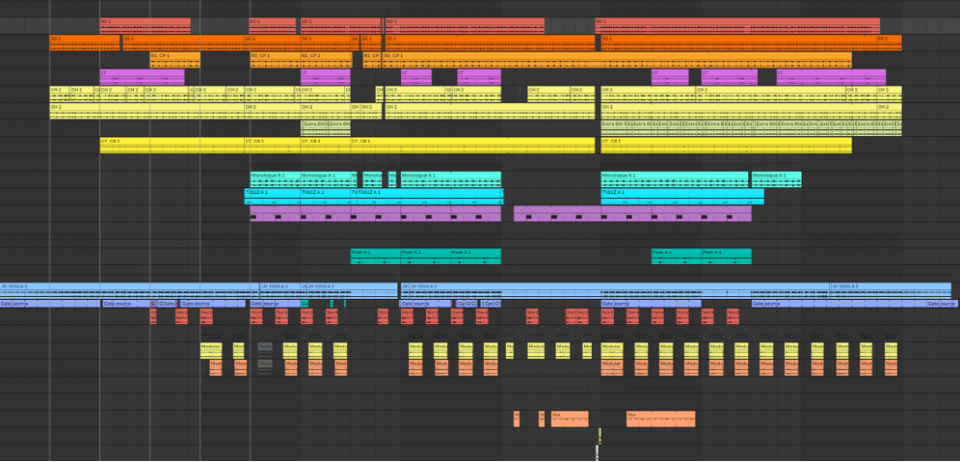
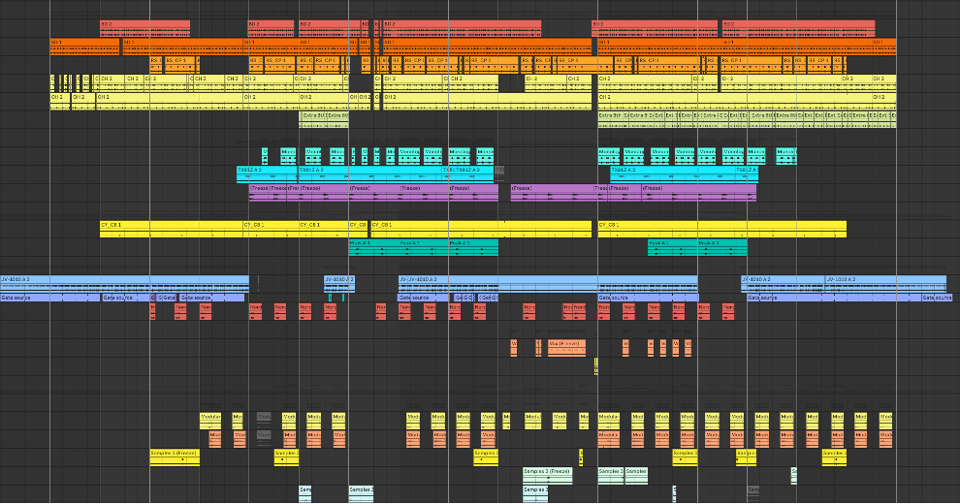
The next step was balancing the different bass patches, which is always a challenge for me. The fine art of maintaining sub pressure while balancing the top end of each sound makes it far harder than mixing higher-frequency elements. I have great respect for bass-focused producers who do this in every track.
The rest of the mixdown was fairly straightforward technical stuff, but there were a couple of interesting flourishes with the drums. Firstly, I added a gated reverb to the snare in the style of Phil Collins. This made the snare sound much bigger and pulled it away from the dry, staccato style of classic 2-step, towards the more spacey vibe I had in mind for the track. I lifted this gate during the breakdown, letting the reverb ring out to build tension before the drop.
I also sent the whole drum buss to a return track with a long multi-effect chain called “break chopper”. This is one of my oldest Ableton racks and uses Beat Repeat, sample & hold filters, and Auto Pan to randomly chop and pan the top end of the drums, creating a smattering of recycled micropops across the stereo field, filling in the gaps.
When I sent this first mix to Joe, he said it sounded too wet and that it was lacking some of the in-your-face character it had in the first demo. I dialed back the reverb and delay and turned up the lead a little to make it stand out more. Joe was happy with that, and off to mastering it went (thanks Jorge!).
Reflections
Looking back now, the fact that I managed to get all of the core elements recorded during the very first session feels like a testament to how far I’ve come as a producer. Some of my earlier tracks took weeks for even the basic arrangement to come together, and plenty of other projects never came together at all. Nowadays, I seem to have a better instinct for which ideas are worth fleshing out into full tracks, and which supporting elements are needed to get there.
I’m really happy with ‘Lockring’. Even if you’re familiar with Metamatics, I think it has enough of its own character to stand apart. I’m also thrilled to have contributed to In The Pocket, to see my work surrounded by so many other great artists, from Gwenan’s angular rhythms and melodies, to Viewtiful Joe’s masterful breakbeats and Peter Pressure’s driving filter house, to name just a few.
Márton’s pink airbrush-style artwork is stunning, and the mix itself is impressively smooth given the range of music on the compilation. I think it’s a brilliant reflection of Joe’s taste in new music and the strength of the relationships he’s built over his years as a DJ. I really respect his dedication to releasing physical media, despite its difficulties, and he should be proud of getting the result of such an ambitious and time-consuming project out into the world. Chapeau Joe!
I can’t wait to get my copy of the CD and put it on display next to my decks, and I’m really excited to take part in the Berlin leg of the celebrations with Joe, Gwenan and Dana at Arkaoda next week. Bring on the b2bs!
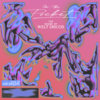
Add a comment: